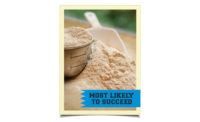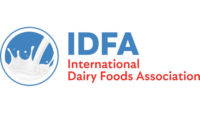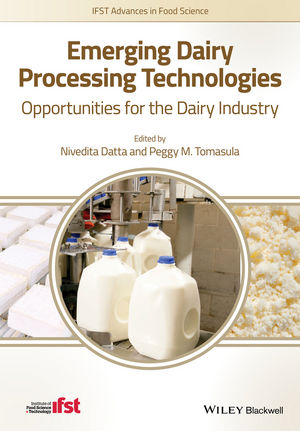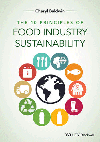Dairy industry pushes back on FDA proposals

Noosa sells a single serving of yogurt in an 8-ounce cup. The FDA proposes reducing the reference amount customarily consumed (or RACC) from 8 ounces to 6 ounces. IDFA concurs.
The International Dairy Foods Association filed detailed comments with the Food and Drug Administration at the end of July challenging the regulator’s proposals to change nutrient content claims, to require labeling of added sugars and to increase the serving size of ice cream.
In a statement, the Washington, D.C.-based trade group said that overall it agrees that “updating the label is important to ensure that consumers get the information they need and that it reflects the best nutritional science available. However, a number of the proposed changes raised concerns about the underlying science and their likely impact on consumer understanding.”
FDA’s proposal would increase the daily value of some nutrients like calcium, potassium and vitamin D so many products would lose their ability to make nutrient content claims, such as “excellent source of calcium and vitamin D” or “good source of potassium,” despite no change to the products themselves. IDFA asked FDA to consider the impact of the proposed changes on the eligibility of foods to qualify for content claims and to consider the potential consumer confusion that would result. In addition, IDFA asked FDA to allow higher levels of vitamin D fortification in dairy products so they could continue to meet “good” or “excellent” source claims.
In a letter to the FDA, IDFA President Connie Tipton and VP for Regulatory and Scientific Affairs Cary Frye wrote, “With an increase in the Daily Value for vitamin D, but with no corresponding increase in the level of vitamin D fortification allowed in dairy foods, the percent Daily Value for vitamin D declared for these products will decrease, although no change has been made to the product. As compared to other products, for which the food additive or GRAS regulations permit higher levels of vitamin D fortification or that are not subject to standards of identity, nutrient-rich dairy products could appear to be a less desirable choice when, in fact, they are a valuable source of vitamin D.”
Sugar is sugar
As for the FDA proposal to require a declaration of added sugars, IDFA calls itself “strongly opposed.” The proposal “would not assist consumers in maintaining healthy dietary practices.” It is a position shared by the Sugar Association, which represents sugar cane farmers and sugar beet refiners. IDFA explained that “no scientific support exists for distinguishing between ‘added sugar’ and ‘naturally occurring’ sugars.” The body doesn’t distinguish a difference between naturally occurring and added sugars, IDFA said.
While the National Milk Producers Federation, Arlington, Va., said it was “basically supportive” of FDA’s proposal to list added sugars, saying it will clarify the contribution of lactose to dairy products and allow consumers to pinpoint added sweeteners in foods. But it does want the FDA to fix the definition of added sugars, specifically lactose. Under FDA’s proposed definition, the lactose in a tablespoon of nonfat dry milk incorporated into another food would count as an “added sugar,” while the lactose in a glass of milk would not, NMPF said.
“Surely, that can’t be what FDA intends,” said Beth Briczinski, NMPF’s vice president for dairy foods and nutrition. “We assume this is simply an oversight, since nonfat dry milk is often an ingredient in dairy products like yogurt and ice cream, as well as other foods, including baked and processed foods that benefit from added milk solids. Either way, this needs to be corrected.”
IDFA also wants this corrected. NMPF offered three specific reasons to exclude lactose-containing dairy ingredients from the definition of added sugars:
- Unlike typical added sugars, dairy ingredients containing lactose are not used primarily to sweeten foods. Milk powder or whey powder, for example, is added to foods for texture and appearance.
- The federal definitions of many standard dairy products allow them to include lactose-containing dairy ingredients (like nonfat milk powder) while still allowing the product to be called “unsweetened.” Examples include unsweetened yogurt and no-sugar-added ice cream.
- Under FDA’s proposed definition, confusion would likely be created, since otherwise-identical dairy products would list or not list added sugars, depending on what ingredient was used. As the rule is currently written, a yogurt made with nonfat dry milk would be required to list added sugars, while the same yogurt made solely from skim milk would not list any added sugar.
As for ice cream, IDFA and NMPF oppose the FDA’s plan to increase a serving size from one-half cup to one cup, the so-called reference amount customarily consumed (RACC), which is the basis for labeling products sold in multipacks. Both NMPF and IDFA noted that while FDA is proposing to increase a frozen dessert serving, consumption of both ice cream and frozen desserts generally has been declining steadily for two decades.
IDFA also does not want the FDA to split the ice cream category into one for bulk ice cream and one for novelty ice cream. But, if FDA determines the RACC for ice cream should be split to provide a separate category for novelties, then IDFA said a three-quarter-cup measure for ice cream should be set based on current consumption data and product composition.
Both NMPF and IDFA support FDA changes for the RACC serving size of yogurt to be reduced from 8 ounces to 6 ounces because this is how yogurt typically is packaged for retail sale.
IDFA agreed with FDA that there is insufficient evidence to support lowering the Daily Value for sodium from 2400 mg to 1500 mg. IDFA recommended that FDA convene a credible scientific panel to consider all recent research concerning sodium and health, and to recommend a new Dietary Reference Value for sodium.
NMPF also used its comments on the proposed revisions to the nutrition facts label to remind the FDA that it is allowing manufacturers of imitation dairy products, including soy “milk” and rice “yogurt,” to trick consumers into thinking their products are nutritionally equivalent to real-milk products.
“The name on a food conveys significant nutritional information,” said Briczinski. “Consumers think non-dairy alternatives with the term ‘milk’ or ‘yogurt’ in their name are nutritionally the same as real dairy products. But they are not. In addition, allowing these imitations to call themselves “milk” or “yogurt” is a clear violation of FDA’s own food standards and labeling regulations.
Looking for a reprint of this article?
From high-res PDFs to custom plaques, order your copy today!










